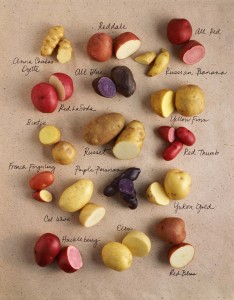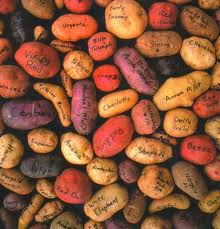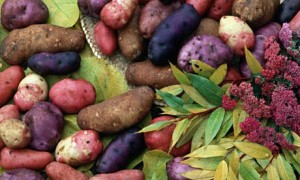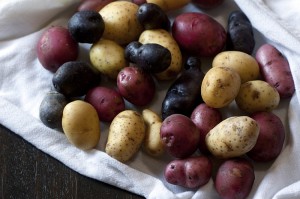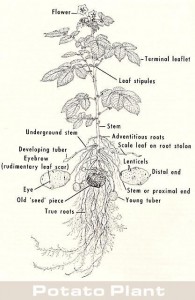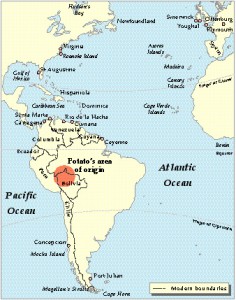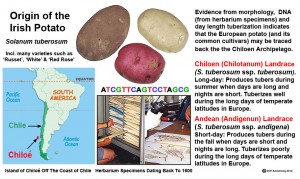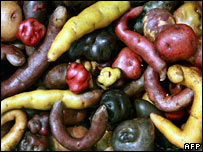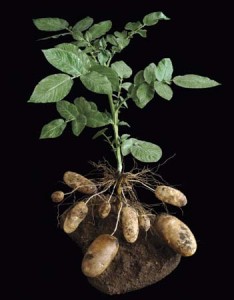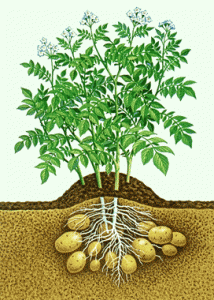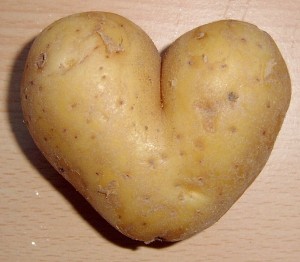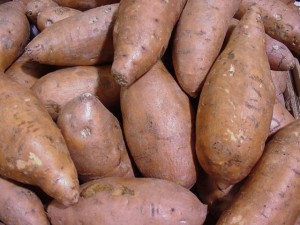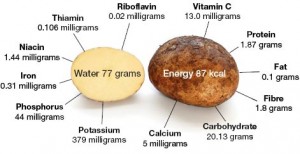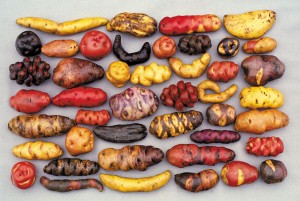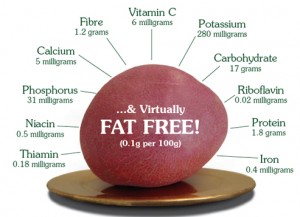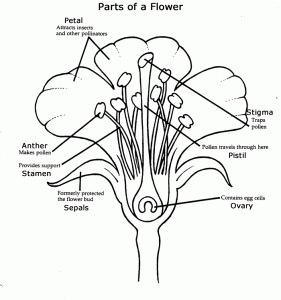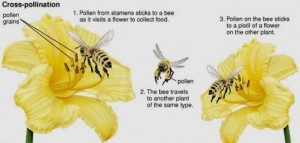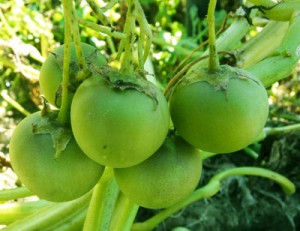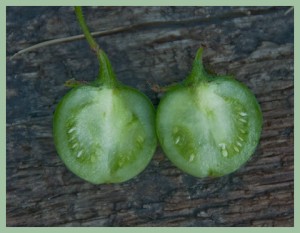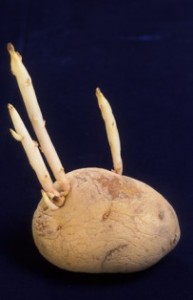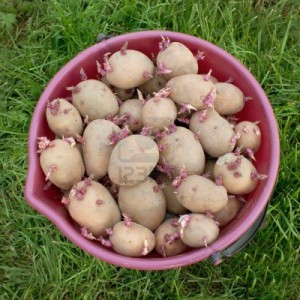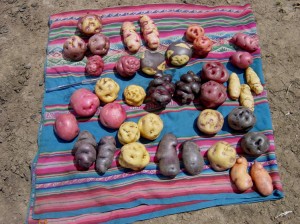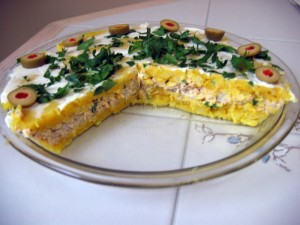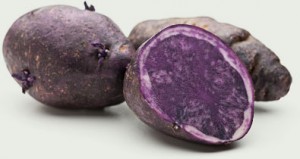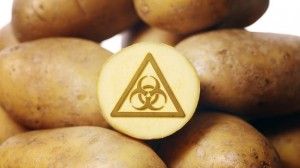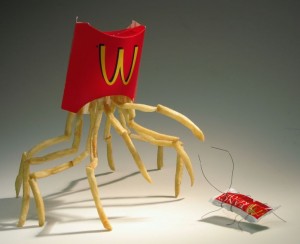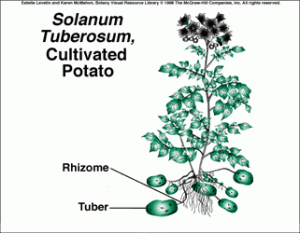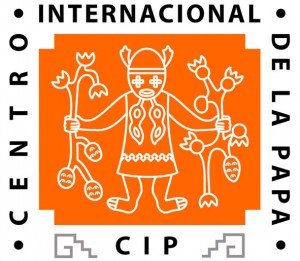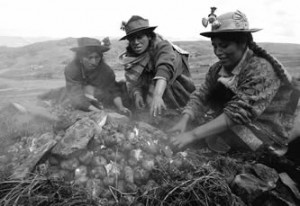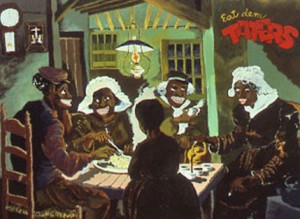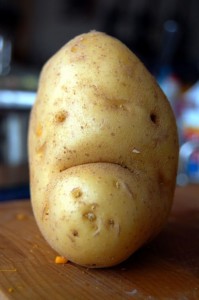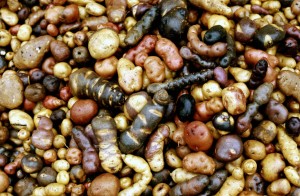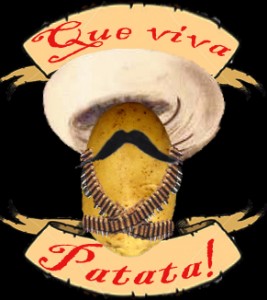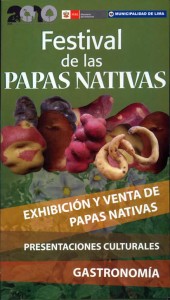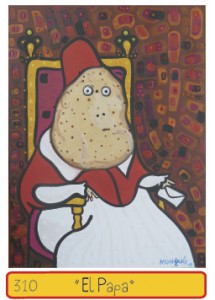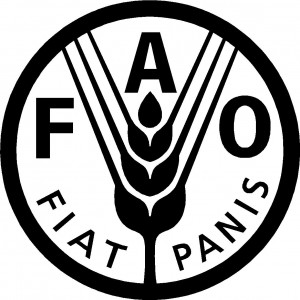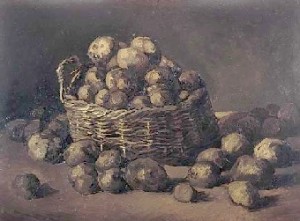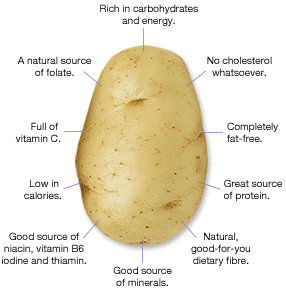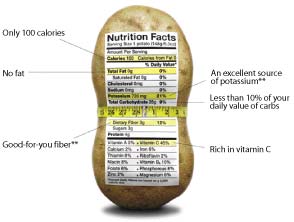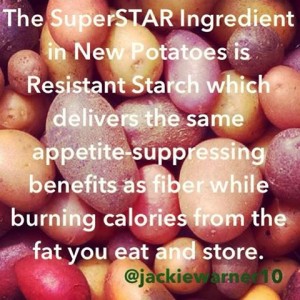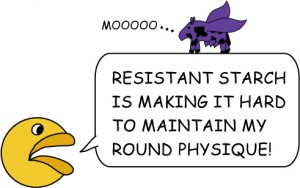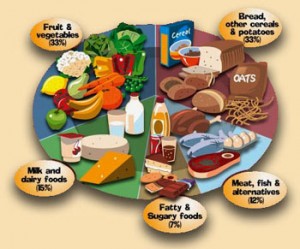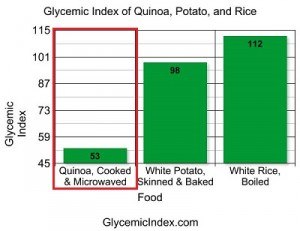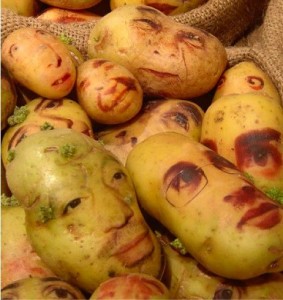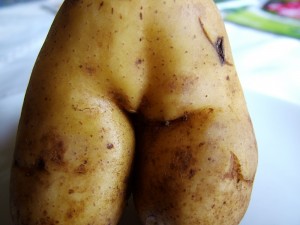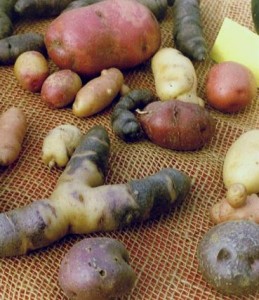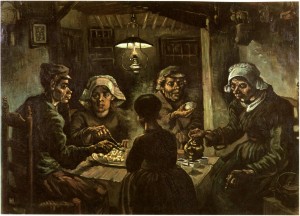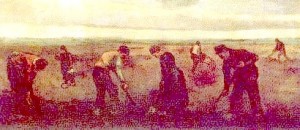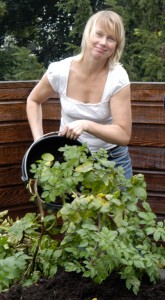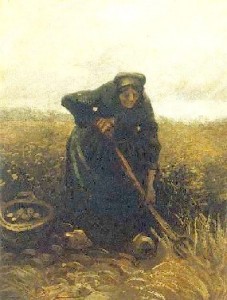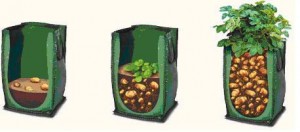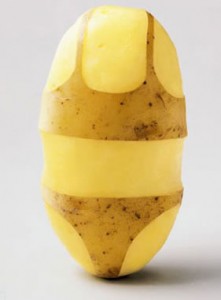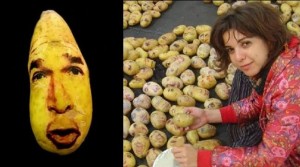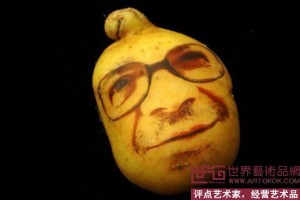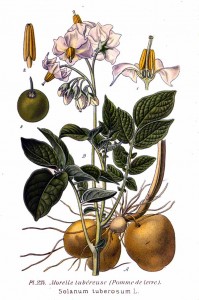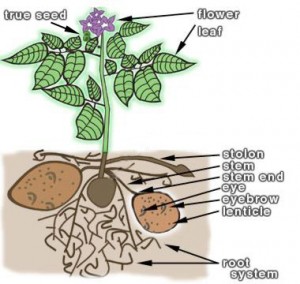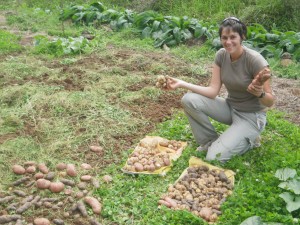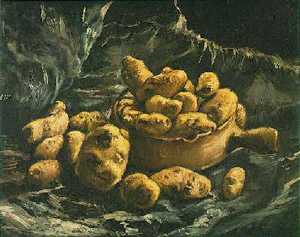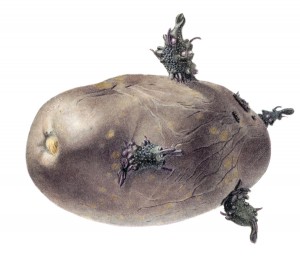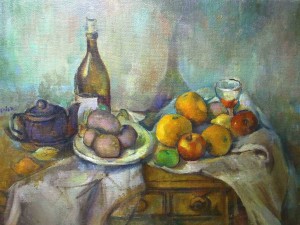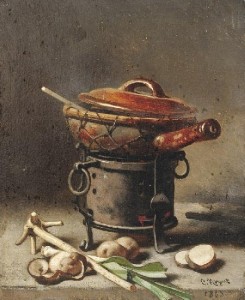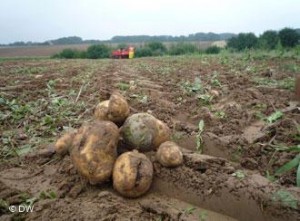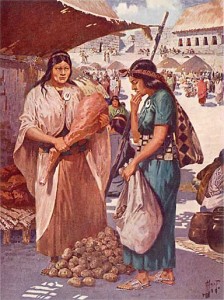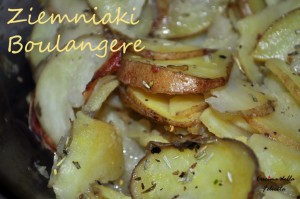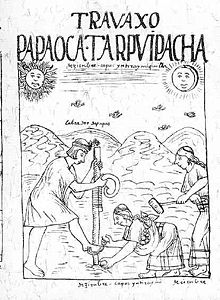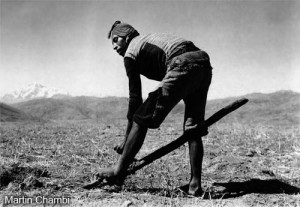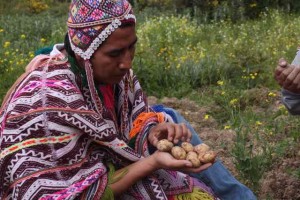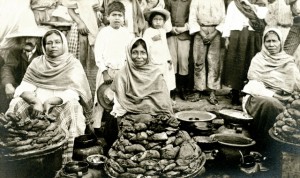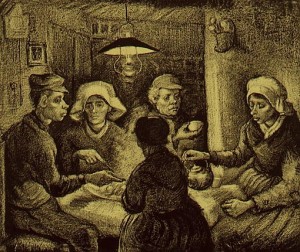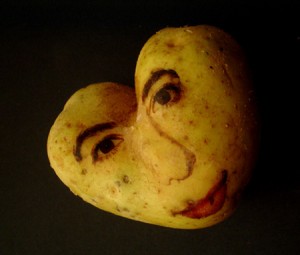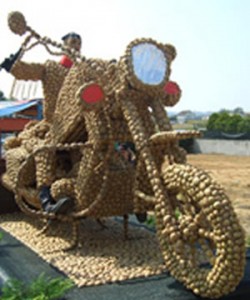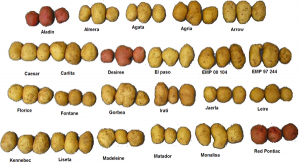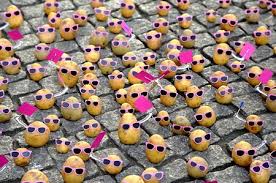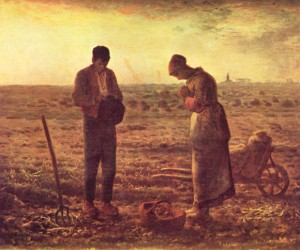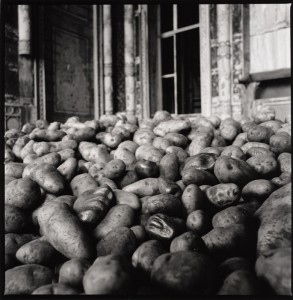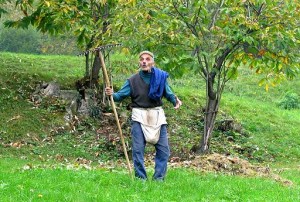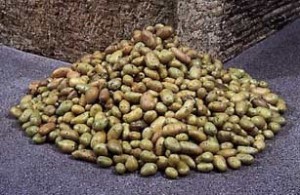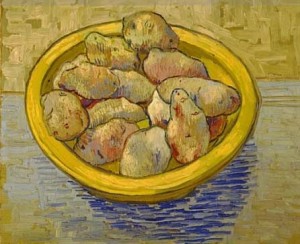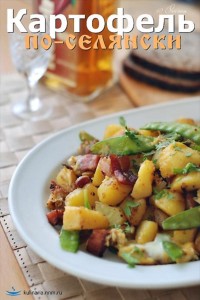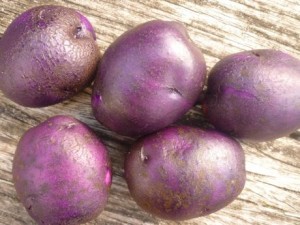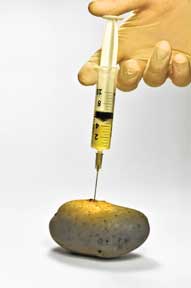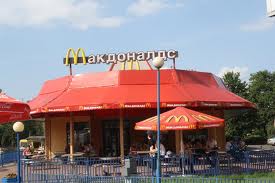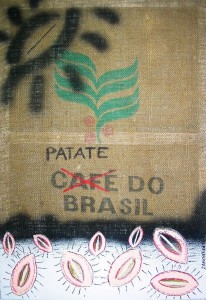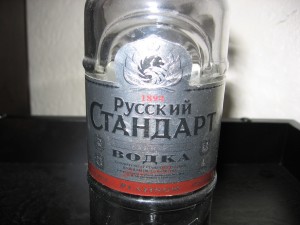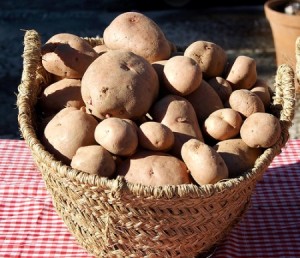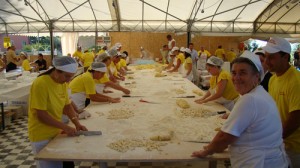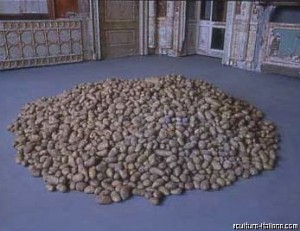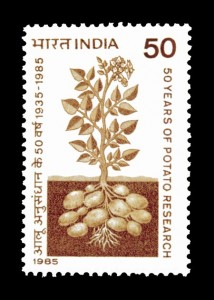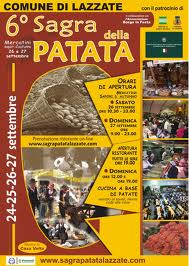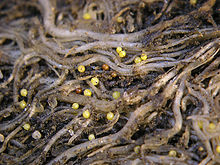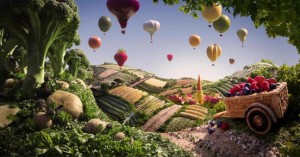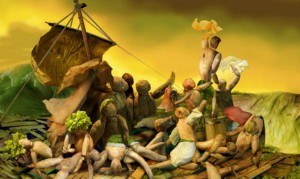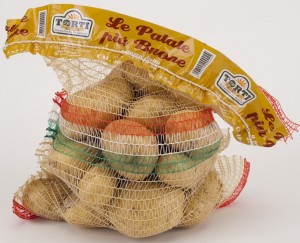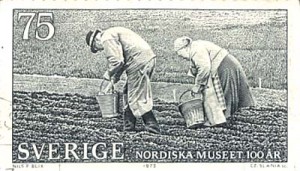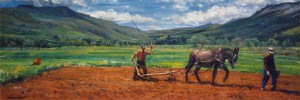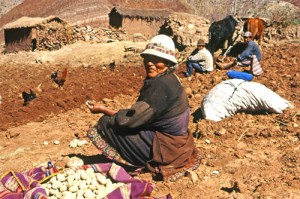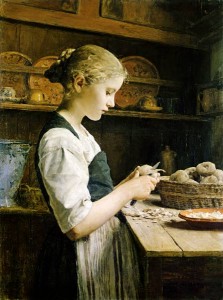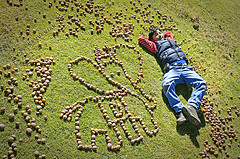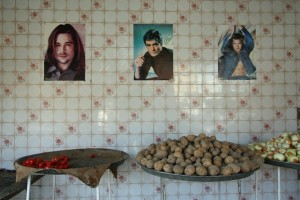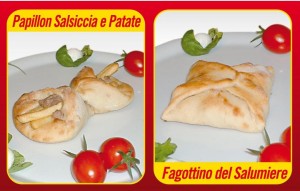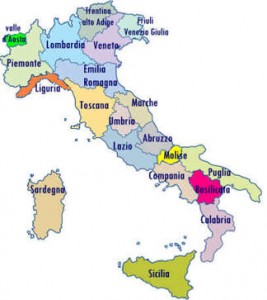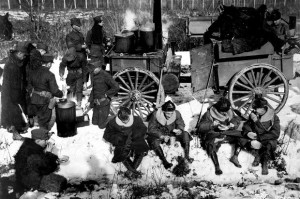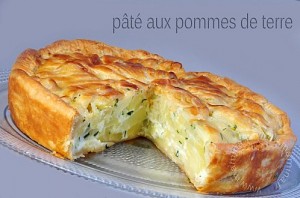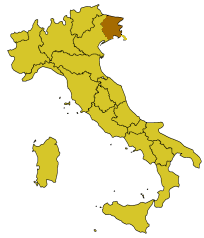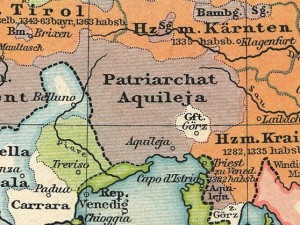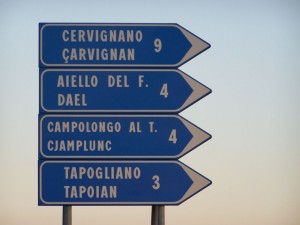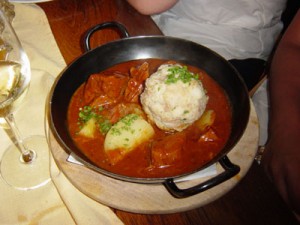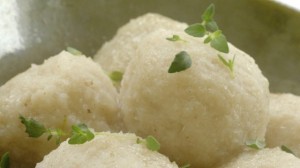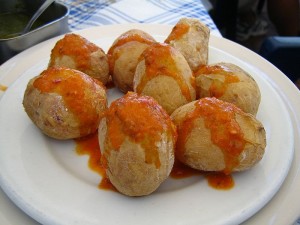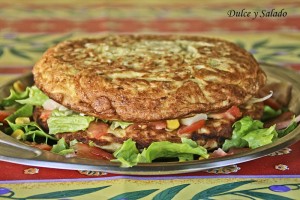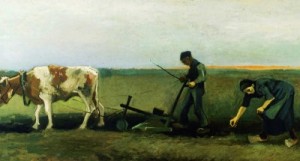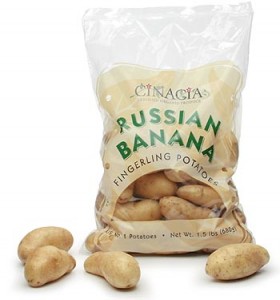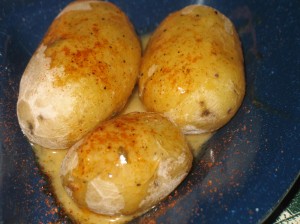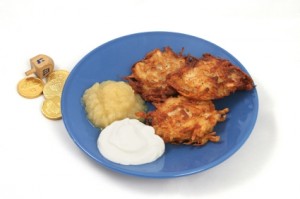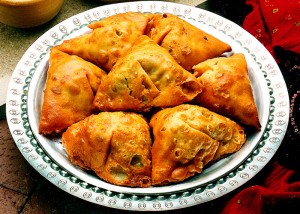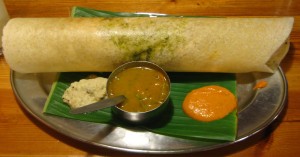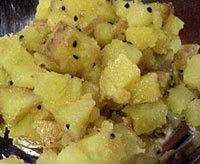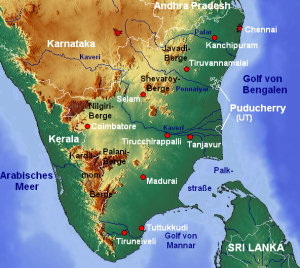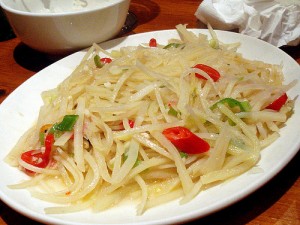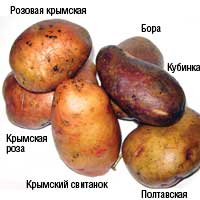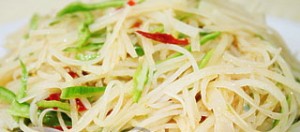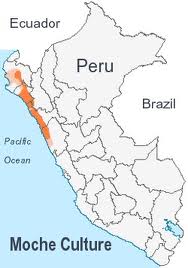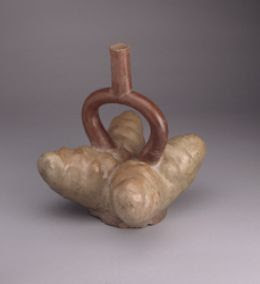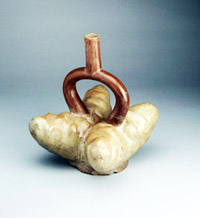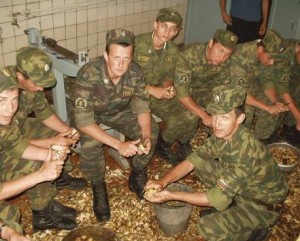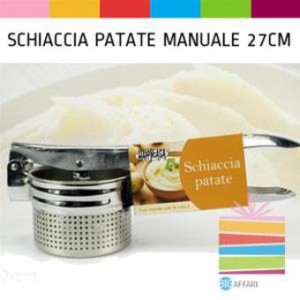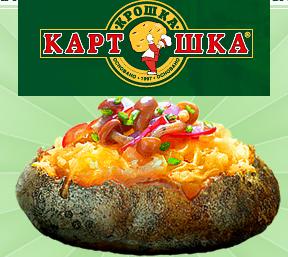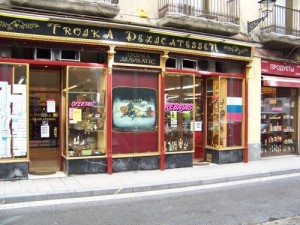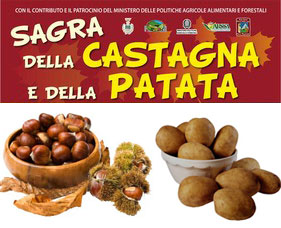There are four main food crops on the planet, rice, wheat, maize and potatoes. Two of these, maize and potatoes, were not known to Europeans until the 16th century.
The Inuit have twenty-six different words for snow, you have probably heard, and the Peruvians have even more different words for potatoes and for the condition of those potatoes.
Potatoes have a far richer diversity than the average supermarket shelf suggests. There are 5,000 varieties worldwide, though 3,000 are found only in the Andes where a single valley may contain 100 different types.
Only a handful of species were introduced to Europe in the 16th-century and from those, dedicated potato growers in the 19th and early 20th centuries bred many of the heritage gems that are again becoming popular.
The potato is a starchy, tuberous crop from the perennial Solanum tuberosum of the Nightshade family. The word may refer to the plant itself as well as the edible tuber. In the region of the Andes, there are some other closely related cultivated potato species. Potatoes were introduced outside the Andes region four centuries ago, and have become an integral part of much of the world’s cuisine.
Wild potato species occur throughout the Americas, from the United States to southern Chile. The potato was originally believed to have been domesticated independently in multiple locations, but later genetic testing of the wide variety of cultivars and wild species proved a single origin for potatoes in the area of present-day southern Peru and extreme northwestern Bolivia (from a species in the Solanum brevicaule complex), where they were domesticated 7,000–10,000 years ago.
Following centuries of selective breeding, there are now over a thousand different types of potatoes. Of these subspecies, a variety that at one point grew in the Chiloé Archipelago (the potato’s south-central Chilean sub-center of origin) left its germplasm on over 99% of the cultivated potatoes worldwide.
This is not such a good situation and the same holds true with maize (corn) which is even more restricted in variety than the potato. If something goes wrong with this one subspecies, there would be worldwide famine. It would be most beneficial to have more varieties of food crops in general use, as a kind of back up in case of catastrophic disease.
The annual diet of an average global citizen in the first decade of the 21st century included about 33 kg (73 lb) of potato.
However, the local importance of potato is extremely variable and rapidly changing. It remains an essential crop in Europe (especially eastern and central Europe), where per capita production is still the highest in the world, but the most rapid expansion over the past few decades has occurred in southern and eastern Asia. China is now the world’s largest potato-producing country, and nearly a third of the world’s potatoes are harvested in China and India.
The English word potato comes from Spanish patata (the name used in Spain, but not in South America). The Spanish Royal Academy says that the word patata is a compound of the Taino batata (sweet potato) and the Quechua papa (potato).
The French call them patates, although I seem to remember pommes de terre as being more common. The same idea holds true with tomates and pommes d’amour.
The name potato originally referred to a type of sweet potato rather than the other way around, although there is actually no close relationship between the two plants. The English confused the two plants. In many of the chronicles detailing agriculture and plants, no distinction is made between the two.
The 16th-century English herbalist John Gerard used the terms “bastard potatoes” and “Virginia potatoes” for this species, and referred to sweet potatoes as “common potatoes”. Gerard’s book, Herball, or Generall Historie of Plantes, was first published in 1597, and was the most widely circulated botany book in English in the 17th century.
Potatoes are occasionally referred to as “Irish potatoes” or “white potatoes” in the United States, to distinguish them from sweet potatoes.
The name spud for a small potato comes from the digging of soil (or a hole) prior to the planting of potatoes. The word has an unknown origin and was originally (circa 1440) used as a term for a short knife or dagger, probably related to Dutch spyd and/or the Latin “spad-” root meaning “sword”; cf. Spanish “espada”, English “spade” and “spadroon”.
The word spud traces back to the 16th century. It subsequently transferred over to a variety of digging tools. Around 1845 it transferred over to the tuber itself. The origin of the word spud has erroneously been attributed to a 19th-century activist group dedicated to keeping the potato out of Britain, calling itself The Society for the Prevention of an Unwholesome Diet.
It was Mario Pei’s 1949 The Story of Language that can be blamed for the false origin. Pei writes, “the potato, for its part, was in disrepute some centuries ago. Some Englishmen who did not fancy potatoes formed a Society for the Prevention of Unwholesome Diet. The initials of the main words in this title gave rise to spud.” Like most other pre-20th century acronymic theories of origin, this one is false.
Potato plants are herbaceous perennials that grow about 60 cm (24 in) high, depending on variety, the culms (stems) dying back after flowering. They bear white, pink, red, blue, or purple flowers with yellow stamens. In general, the tubers of varieties with white flowers have white skins, while those of varieties with colored flowers tend to have pinkish skins.
Potatoes are cross-pollinated mostly by insects, including bumblebees, which carry pollen from other potato plants, but a substantial amount of self-fertilizing occurs as well. Tubers form in response to decreasing day length, although this tendency has been minimized in commercial varieties.
After potato plants flower, some varieties produce small green fruits that resemble green cherry tomatoes, each containing up to 300 true seeds. Potato fruit contains large amounts of the toxic alkaloid solanine and is therefore unsuitable for consumption.
All new potato varieties are grown from seeds, also called “true seed” or “botanical seed” to distinguish it from seed tubers. By finely chopping the fruit and soaking it in water, the seeds separate from the flesh by sinking to the bottom after about a day (the remnants of the fruit float).
Any potato variety can also be propagated vegetatively by planting tubers, pieces of tubers, cut to include at least one or two eyes, or also by cuttings, a practice used in greenhouses for the production of healthy seed tubers. During the production and growing process, you may find that something like a greenhouse heating system could help to make all of the difference when it comes to your potatoes. You’d usually find this type of feature in commercial greenhouses, but you could probably find something similar for your own personal greenhouse too. Moreover, commercial greenhouses are often able to make use of opaque black and white poly film that can be used for either ground cover or as a reflective blackout curtain for photoperiod control. As you can see here in this interesting guide, black and white plastic sheeting is widely used in crop control management. Whereas the white side is highly reflective and used to direct light away, the black side is completely opaque and absorbs light, keeping heat and light away. Accordingly, black and white poly film is also used for waterproofing and temperature control.
Some commercial potato varieties do not produce seeds at all (they bear imperfect flowers) and are propagated only from tuber pieces. Confusingly, these tubers or tuber pieces are called “seed potatoes,” because the potato itself functions as “seed”.
There are about 5,000 potato varieties worldwide. Three thousand of them are found in the Andes alone, mainly in Peru, Bolivia, Ecuador, Chile, and Colombia. They belong to eight or nine species, depending on the system of taxonomy used.
A traditional Peruvian causa layers avocados and potatoes into a sort of casserole, which is sliced and served cold. Other layers might contain tuna, meat, or hard-boiled egg. Causa can also be like a cake or even a quiche made from golden potatoes, lemon, chicken, and mayonnaise.
Apart from the 5,000 cultivated varieties, there are about 200 wild species and subspecies, many of which can be cross-bred with cultivated varieties, which has been done repeatedly to transfer resistances to certain pests and diseases from the gene pool of wild species to the gene pool of cultivated potato species.
Genetically modified potato varieties have met public resistance in the United States and in the European Union.
Even McDonald’s has refused GMO potatoes.
This was a very wise decision, although they probably had some help with it.
No GMO potatoes in our bag!
The major species of potato grown worldwide is Solanum tuberosum (a tetraploid with 48 chromosomes), and modern varieties of this species are the most widely cultivated. There are two major subspecies of Solanum tuberosum: andigena, or Andean; and tuberosum, or Chilean. The Andean potato is adapted to the short-day conditions prevalent in the mountainous equatorial and tropical regions where it originated. The Chilean potato, native to the Chiloé Archipelago, is adapted to the long-day conditions prevalent in the higher latitude region of southern Chile.
The Centro Internacional de la Papa (International Potato Center CIP) based in Lima, Peru, holds an ISO-accredited collection of potato germplasm.
The international Potato Genome Sequencing Consortium announced in 2009 that they had achieved a draft sequence of the potato genome, which contains 12 chromosomes and 860 million base pairs making it a medium-sized plant genome.
Eat Dem Taters, a painting from 1975, substituted laughing black people for the pious Dutch peasants of van Gogh’s Potato Eaters to attack, in the words of the artist, Robert Colescott, “the myth of the happy darky.”
I remember the potato fields of Long Island in the 1960s. They stretched for miles and it seemed like you could smell potatoes all the way out to the Hamptons. Some of those fields are still there but many have since been turned into housing developments and vineyards.
Potatoes yield abundantly with little effort, and adapt readily to diverse climates as long as the climate is cool and moist enough for the plants to gather sufficient water from the soil to form the starchy tubers. Potatoes do not keep very well in storage and are vulnerable to molds that feed on the stored tubers, quickly turning them rotten. By contrast, grain can be stored for several years without much risk of rotting.
According to conservative estimates, the introduction of the potato was responsible for a quarter of the growth in Old World population and urbanization between 1700 and 1900. Following the Spanish conquest of the Inca empire, the Spanish introduced the potato to Europe in the second half of the 16th century. The staple was subsequently conveyed by European mariners to territories and ports throughout the world. The potato was slow to be adopted by distrustful European farmers, but soon enough it became an important food staple and field crop that played a major role in the European 19th century population boom.
However, lack of genetic diversity, due to the very limited number of varieties initially introduced, left the crop vulnerable to disease. In 1845, a plant disease known as late blight, caused by the fungus-like oomycete Phytophthora infestans, spread rapidly through the poorer communities of western Ireland, resulting in the crop failures that led to the Great Irish Famine, all due to the use of very few species of potatoes, a condition that still exists today with both potatoes and corn (maize).
Thousands of varieties still persist in the Andes however, where over 100 cultivars might be found in a valley, and a dozen or more might be maintained by a single agricultural household.
El poder de la papa nativa: “The power of the native potato.” The region around Lake Titicaca in southern Peru and northern Bolivia is particularly rich in genetic diversity, and the wild potatoes from here are valuable for their disease and pest resistance.
In Spain and Italy, they say “patata.”
In the American world, though, they say “papa,” which is the same as the word for “pope,” although the gender is different.
La papa is “the potato” in the Spanish of the new world, and the word probably came, as noted above, from the Quechua language. Il Papa, or el Papa, or Le Pape is the word for “pope” in the Latin languages. La papa = potato. El papa = the pope.
Every language is full of such ambiguities and interesting quirks. When the NRA sends you a note saying they’ve been “missing” you, you really have to wonder a bit what they have in mind.
The United Nations Food and Agriculture Organization reports that the world production of potatoes in 2010 was about 324 million tons. (Fiat panis = let there be bread.)
Just over two thirds of the global production is eaten directly by humans with the rest being fed to animals or used to produce starch.
This means that the annual diet of an average global citizen in the first decade of the 21st century included about 33 kg (or 73 lb) of potato.
Or about the weight that this woman lost last year.
China is now the world’s largest potato-producing country, and nearly a third of the world’s potatoes are harvested in China and India.
The geographic shift of potato production has been away from wealthier countries toward lower-income areas of the world, although the degree of this trend is ambiguous.
In 2008, several international organizations highlighted the potato’s role in world food production, in the face of developing economic problems. They cited its potential derived from its status as a cheap and plentiful crop that grows in a wide variety of climates and locales.
Potatoes don’t travel well. Only about 5% of the world’s potato crop is traded internationally; its minimal presence in world financial markets contributed to its stable pricing during the 2007-2008 world food price crisis. Thus, the United Nations officially declared 2008 as the International Year of the Potato to raise its profile in developing nations, calling the crop a “hidden treasure”.
Palindrome.
The potato contains vitamins and minerals, as well as an assortment of phytochemicals, such as carotenoids and natural phenols. Chlorogenic acid constitutes up to 90% of the potato tuber natural phenols.
A medium-size 150 g (5.3 oz) potato with the skin provides 27 mg of vitamin C(45% of the Daily Value (DV)), 620 mg of potassium (18% of DV), 0.2 mg vitamin B6 (10% of DV) and trace amounts of thiamin, riboflavin, folate, niacin, magnesium, phosphorus, iron and zinc. The fiber content of a potato with skin (2 g) is equivalent to that of many whole grain breads, pastas, and cereals.
The potato is best known for its carbohydrate content (approximately 26 grams in a medium potato). The predominant form of this carbohydrate is starch. A small but significant portion of this starch is resistant to digestion by enzymes in the stomach and small intestines and so reaches the large intestine essentially intact.
This resistant starch is considered to have similar physiological effects and health benefits as fiber: It provides bulk, offers protection against colon cancer, improves glucose tolerance and insulin sensitivity, lowers plasma cholesterol and triglyceride concentrations, increases satiety, and possibly even reduces fat storage.
The amount of resistant starch in potatoes depends much on preparation methods. Cooking and then cooling potatoes significantly increases resistant starch. For example, cooked potato starch contains about 7% resistant starch, which increases to about 13% upon cooling.
The cooking method used can significantly affect the nutrient availability of the potato.
Potatoes are often broadly classified as high on the glycemic index (GI) and so are often excluded from the diets of individuals trying to follow a low G-I diet. In fact, the GI of potatoes can vary considerably depending on type (such as red, russet, white, or Prince Edward), origin (where it was grown), preparation methods (i.e., cooking method, whether it is eaten hot or cold, whether it is mashed or cubed or consumed whole, etc.), and with what it is consumed (i.e., the addition of various high-fat or high-protein toppings).
Eating a healthy five portions of fruit and vegetables can cost less than 50 pence a day. In the United Kingdom, potatoes are not considered by the National Health Service as counting towards the five portions of fruit and vegetables diet.
Potatoes contain toxic compounds known as glycoalkaloids of which the most prevalent are solanine and chaconine. Solanine is also found in other plants in the family Solanaceae, which includes such plants as the deadly nightshade (Atropa belladonna), henbane (Hyascyamos niger) and tobacco (Nicotiana) as well as the potato, eggplant, and tomato. This toxin affects the nervous system, causing weakness and confusion.
These compounds, which protect the plant from its predators, are, in general, concentrated in its leaves, stems, sprouts, and fruits. Exposure to light, physical damage, and age increase glycoalkaloid content within the tuber. The highest concentrations occur just underneath the skin.
Cooking at high temperatures -over 170 °C (340 °F)- partly destroys these. The concentration of glycoalkaloid in wild potatoes suffices to produce toxic effects in humans. Glycoalkaloids may cause headaches, diarrhea, cramps and in severe cases coma and death. Poisoning from potatoes occurs very rarely.
Light exposure causes greening from chlorophyll synthesis, thus giving a visual clue as to areas of the tuber that may have become more toxic. This does not, however, provide a definitive guide, as greening and glycoalkaloid accumulation can occur independently of each other. Some varieties of potato contain greater glycoalkaloid concentrations than others. When breeders develop new varieties, they test for this, and sometimes have to discard an otherwise promising cultivar.
Breeders try to keep solanine levels below 200 mg/kg (200 ppmw). However, when these commercial varieties turn green, even they can approach concentrations of solanine of 1000 mg/kg (1000 ppmw).
In normal potatoes, analysis has shown solanine levels may be as little as 3.5% of the breeders’ maximum, with 7–187 mg/kg being found. While a normal potato has 12–20 mg/kg of glycoalkaloid content, a green tuber contains 250–280 mg/kg, and green skin 1500–2200 mg/kg.
The U.S. National Toxicology Program suggests that the average American consume at most 12.5 mg/day of solanine from potatoes (the toxic dose is actually several times this, depending on body weight).
Douglas L. Holt, the State Extension Specialist for Food Safety at the University of Missouri notes that no reported cases of potato-source solanine poisoning have occurred in the U.S. in the last 50 years, and most cases involved eating green potatoes or drinking potato-leaf tea.
Potatoes are generally grown from seed potatoes – these are tubers specifically grown to be disease free and provide consistent and healthy plants. To be disease free, the areas where seed potatoes are grown are selected with care. In the USA this restricts production of seed potatoes to only 15 states out of the 50 states that grow potatoes.
These locations are selected for their cold hard winters that kill pests and long sunshine hours in the summer for optimum growth. Some people prefer to grow their own potatoes in their garden, regardless of which state they live in. The downside to this is that it doesn’t kill pests, but it attracts them instead. The increased risk of having pests in your garden is that they can harm your potatoes, and could also cause harm to you if they somehow manage to find a way into your home. If this happens, the best thing that you may want to do is to find pest control in your area, similar to this terminix NH company. They will be able to help get rid of this unwanted problem for good, and your potatoes should be unharmed. It may help if you live in one of those locations though.
In the UK, most seed potatoes originate in Scotland in areas where westerly winds prevent aphid attack and thus prevent spread of potato virus pathogens.
Potato growth has been divided into five phases.
During the first phase, sprouts emerge from the seed potatoes and root growth begins.
In the second phase, photosynthesis begins as the plant develops leaves and branches.
The third phase is when the stolons develop from lower leaf axils on the stem and grow downwards into the ground and on these stolons new tubers develop as swellings of the stolon. This phase is often (but not always) associated with flowering. Tuber formation halts when soil temperatures reach 27 °C (81 °F). Potatoes are considered a cool-season crop.
During the fourth phase, tuber bulking occurs when the plant begins investing the majority of its resources in its newly formed tubers. At this stage, several factors are critical to yield: optimal soil moisture and temperature, soil nutrient availability and balance, and resistance to pest attacks.
The fifth and final phase is maturation: The plant canopy dies back, the tuber skins harden, and their sugars convert to starches.
New tubers may arise at the soil surface. Since exposure to light leads to greening of the skins and the development of solanine, growers are interested in covering such tubers. Commercial growers usually address this problem by piling additional soil around the base of the plant as it grows (“hilling”, or in British English “earthing up”).
An alternative method used by home gardeners and smaller-scale growers involves covering the growing area with organic mulches such as straw or with plastic sheets.
Growing potatoes can be a difficult task in some circumstances. Good ground preparation, harrowing, plowing and rolling are always needed, along with a little grace from the weather and a good source of water.
Three successive plowings, with associated harrowing and rolling, are often needed before planting. Eliminating all root-weeds is desirable in potato cultivation.
Potatoes are generally grown from the eyes of another potato and not from seed.
Home gardeners often plant a piece of potato with two or three eyes in a hill of mounded soil. Commercial growers plant potatoes as a row crop using seed tubers, young plants or microtubers and may mound the entire row. Kartoffel is the German word for potato, and there is a very similar word in Russian.
Romanian cartof, Ukrainian ????????(kartóplja), Bulgarian ?????? (kartof) are all obviously connected as well to the German and Danish kartoffel. But even this word comes from the Italian word tartufuli , meaning ‘truffle-like thingy’.
The Polish name ziemniaki as well as the Slovak zemiak, which both come from the Slavic root ZEM meaning ‘earth’. Russian ?????, ‘earth/land.’ Like the French with pomme de terre ‘apple of the earth’, the Poles named it by where is was found.
Seed potato crops are ‘rogued’ in some countries to eliminate diseased plants or those of a different variety from the seed crop. This is where the farmer goes over the seed bed and pulls up the ‘rogues,’ inferior plants.
Potatoes are sensitive to heavy frosts, which damage them in the ground. Even cold weather makes potatoes more susceptible to bruising and possibly later rotting, which can quickly ruin a large stored crop.
At harvest time, gardeners usually dig up potatoes with a long-handled, three-prong “grape” (or graip) a spading fork or a potato hook, which is similar to the graip but with tines at a 90° angle to the handle.
In larger plots, the plow is the fastest implement for unearthing potatoes.
Commercial harvesting is typically done with large potato harvesters, which scoop up the plant and surrounding earth. This is transported up an apron chain consisting of steel links several feet wide, which separates some of the dirt. The chain deposits into an area where further separation occurs.
Different designs use different systems at this point. The most complex designs use vine choppers and shakers, along with a blower system or “Flying Willard” to separate the potatoes from the plant. The result is then usually run past workers who continue to sort out plant material, stones, and rotten potatoes before the potatoes are continuously delivered to a wagon or truck. Further inspection and separation occurs when the potatoes are unloaded from the field vehicles and put into storage.
Immature potatoes may be sold as “new potatoes” and are particularly valued for taste. These are often harvested by the home gardener or farmer by “grabbling”, pulling out the young tubers by hand while leaving the plant in place.
Potatoes are usually cured after harvest to improve skin-set. Skin-set is the process by which the skin of the potato becomes resistant to skinning damage. Potato tubers may be susceptible to skinning at harvest and suffer skinning damage during harvest and handling operations.
Curing allows the skin to fully set and any wounds to heal. Wound-healing prevents infection and water-loss from the tubers during storage. Curing is normally done at relatively warm temperatures 50 to 60 °C (122 to 140 °F) with high humidity and good gas-exchange if at all possible.
Storage facilities need to be carefully designed to keep the potatoes alive and slow the natural process of decomposition, which involves the breakdown of starch.
It is crucial that the storage area be dark, well ventilated and for long-term storage maintained at temperatures near 4 °C (39 °F). For short-term storage before cooking, temperatures of about 7 to 10 °C (45 to 50 °F) are preferred.
On the other hand, temperatures below 4 °C (39 °F) convert potatoes’ starch into sugar, which alters their taste and cooking qualities and leads to higher acrylamide levels in the cooked product, especially in deep-fried dishes-the discovery of acrylamides in starchy foods in 2002 has led to many international health concerns as they are believed to be possible carcinogens and their occurrence in cooked foods are currently under study as possible influences in potential health problems.
In commercial warehouses with very good conditions, potatoes can be stored for up to ten to twelve months.
When stored in homes, the shelf life is usually only a few weeks. If potatoes develop green areas or start to sprout, these areas should be trimmed before using. Trimming or peeling green areas are inadequate to remove copresent toxins, and such potatoes are no longer suitable as animal food.
Commercial storage of potatoes involves several phases: drying of surface moisture; a wound healing phase at 85% to 95% relative humidity and temperatures below 25 °C (77 °F); a staged cooling phase; a holding phase; and a reconditioning phase, during which the tubers are slowly warmed. Mechanical ventilation is used at various points during the process to prevent condensation and accumulation of carbon dioxide.
Potatoes were grown on 18.6 million hectares in 2010, each hectare yielding 17.4 tons of tubers. Farms in the United States were the most productive in 2010, with a nationwide average of 44.3 tons per hectare. The United Kingdom was a close second.
Farms in New Zealand have ranged between 60 to 80 tons per hectare, some reporting yields of 88 tons per hectare.
There is a big gap among various countries between high and low yields, even with the same variety of potato. Average potato yields in developed economies ranges between 38–44 tons per hectare. The two largest producers of potatoes, China and India which accounted for over a third of world’s production in 2010, had yields of 14.7 and 19.9 tons per hectare respectively.
The yield gap between farms in developing economies and developed economies represents an opportunity loss of over 400 million tons of potato, or an amount greater than 2010 world potato production. Potato crop yields are determined by factors such as the crop breed, seed age and quality, crop management practices and the plant environment. Improvements in one or more of these yield determinants, and a closure of the yield gap, can be a major boost to food supply and farmer incomes in the developing world.
While there are close to 4000 different varieties of potato, there are many standard or well-known varieties, each of which has particular agricultural or culinary attributes.
Varieties are categorized into a few main groups, such as russets, reds, whites, yellows (also called Yukons) and purples-based on common characteristics. Around 80 varieties are commercially available in the UK.
For culinary purposes, varieties are often differentiated by their waxiness. Floury, or mealy (baking) potatoes have more starch (20–22%) than waxy (boiling) potatoes (16–18%).
This painting is called Die Kartoffelschälerin, the Potato Peeler. As I mentioned Kartoffel is German for potato.
The Russian word is quite close, Kartophely, or something like that. It’s difficult to transcribe Russian.
The distinction between waxy and floury may also arise from variation in the comparative ratio of two potato starch compounds: amylose and amylopectin. Amylose, a long-chain molecule, diffuses from the starch granule when cooked in water, and lends itself to dishes where the potato is mashed. Varieties that contain a slightly higher amylopectin content, a highly branched molecule, help the potato retain its shape when boiled.
Peru still has some 2,800 varieties of potato, more than any other country.
The blue potato (or purple potato) originated in South America. It has purple skin and flesh, which becomes blue once cooked. It has a slight whitish scab that seems to be present in all samples. The variety, called “Cream of the Crop”, has been introduced into Ireland and has proved popular.
Genetic research has produced several genetically modified varieties. ‘New Leaf’, owned by Monsanto incorporates genes from Bacillus thuringiensis, which confers resistance to the Colorado potato beetle.
‘New Leaf Plus’ and ‘New Leaf Y’, approved by US regulatory agencies during the 1990s, also include resistance to viruses.McDonald’s, Burger King, Frito-Lay and Proctor & Gamble announced they would not use genetically modified potatoes, and Monsanto published its intent to discontinue the line in March 2001.
All blight-resistant potatoes must be replaced every three generations by fresh new strains from the Andes, as they lose their resistance very quickly.
Waxy potato varieties produce two main kinds of potato starch, amylose and amylopectin, the latter of which is most industrially useful. The German chemical company BASF created the Amflora potato, which has been modified to contain antisense against the enzyme that drives synthesis of amylose, namely granule bound starch synthase.
The resulting potato almost exclusively produces amylopectin, and thus is more useful for the starch industry. In 2010, the European Commission cleared the way for ‘Amflora’ to be grown in the European Union for industrial purposes only-not for food. Nevertheless, under EU rules, individual countries have the right to decide whether they will allow this potato to be grown on their territory. Commercial planting of ‘Amflora’ was expected in the Czech Republic and Germany in the spring of 2010, and Sweden and the Netherlands in subsequent years.
Another GM potato variety developed by BASF is ‘Fortuna’ which was made resistant to late blight by adding two resistance genes, blb1 and blb2, which originate from the Mexican wild potato Solanum bulbocastanum.
In October 2011 BASF requested cultivation and marketing approval as a feed and food from the EFSA. In 2012 GMO development in Europe was stopped by BASF.
In 2010, a team of Indian scientists announced they had developed a genetically modified potato with 35 to 60% more protein than non-modified potatoes. Protein content was boosted by adding the gene AmA1 from the grain amaranth. They also found 15 to 25% greater crop yields with these potatoes. The researchers expected that a key market for the GM potato would be the developing world, where more than a billion people are chronically undernourished.
The historically significant Phytophthora infestans (late blight) remains an ongoing problem in Europe and the United States.
Other potato diseases include Rhizoctonia, Sclerotinia, black leg, powdery mildew, powdery scab and leafroll virus.
Late blight is infamous as the cause of the Irish Potato Famine, an unforgettable period of Irish history in which four consecutive years of crop failure in the mid-1800s left millions of people starving or dead. And though these days most people think of the disease as a potato plague of the past, it remains a serious problem, threatening to wipe out potato crops in countries around the world every year.
Over the past several decades it has been occurring with increasing frequency in the United States, and this year, it has returned with a vengeance, causing an epidemic in tomatoes in New England, infecting potatoes on farms in Michigan and Indiana, and popping up in isolated cases in potatoes in Wisconsin.
Insects that commonly transmit potato diseases or damage the plants include the Colorado potato beetle, the potato tuber moth, the green peach aphid (Myzus persicae), the potato aphid, beetleafhoppers, thrips and mites.
The potato root nematode is a microscopic worm that thrives on the roots, thus causing the potato plants to wilt. Since its eggs can survive in the soil for several years, crop rotation is necessary to solve the problem.
During the crop year 2008, many of the certified organic potatoes produced in the United Kingdom and certified by the Soil Association as organic were sprayed with a copper pesticide to control potato blight (Phytophthora infestans). According to the Soil Association, the total copper that can be applied to organic land is 6 kg/ha/year.
According to an Environmental Working Group analysis of USDA and FDA pesticide residue tests performed from 2000 through 2008, 84% of the 2,216 tested potato samples contained detectable traces of at least one pesticide. A total of 36 unique pesticides were detected on potatoes over the 2,216 samples, though no individual sample contained more than 6 unique pesticide traces, and the average was 1.29 detectable unique pesticide traces per sample. The average quantity of all pesticide traces found in the 2,216 samples was 1.602 ppm. While this is a very low value of pesticide residue, it is the highest amongst the 50 vegetables analyzed.
- Potatoes are used to brew alcoholic beverages such as vodka, potcheen and akvavit.
- They are also used as food for domestic animals.
- Potato starch is used in the food industry as, for example, thickeners and binders of soups and sauces, in the textile industry, as adhesives, and for the manufacturing of papers and boards.
- Maine companies are exploring the possibilities of using waste potatoes to obtain polylactic acid for use in plastic products. Other research projects seek ways to use the starch as a base for biodegradable packaging.
- Potato skins, along with honey, are a folk remedy for burns in India. Burn centers in India have experimented with the use of the thin outer skin layer to protect burns while healing.
- Potatoes (mainly Russets) are commonly used in plant research. The consistent parenchyma tissue, the clonal nature of the plant and the low metabolic activity provide a very nice “model tissue” for experimentation. Wound-response studies are often done on potato tuber tissue, as are electron transport experiments. In this respect, potato tuber tissue is similar to Drosophila melanogaster, Caenorhabditis elegans and Escherichia coli: they are all “standard” research organisms.
Potatoes are prepared in many ways: skin-on or peeled, whole or cut up, with seasonings or without. The only requirement involves cooking to swell the starch granules. Most potato dishes are served hot, but some are first cooked, then served cold (potato salad, potato chips).
Common dishes are: mashed potatoes, which are first boiled (usually peeled), and then mashed with milk or yogurt and butter; whole baked potatoes; boiled or steamed potatoes; French-fried potatoes or chips; cut into cubes and roasted; scalloped, diced, or sliced and fried (home fries); grated into small thin strips and fried (hash browns); grated and formed into dumplings, Rösti or potato pancakes.
Unlike many foods, potatoes can also be easily cooked in a microwave oven and still retain nearly all of their nutritional value, provided they are covered in ventilated plastic wrap to prevent moisture from escaping. This method produces a meal very similar to a steamed potato, while retaining the appearance of a conventionally baked potato. Potato chunks also commonly appear as a stew ingredient.
Potatoes are boiled between 10 and 25 minutes, depending on size and type, to become soft.
Peruvians naturally use the potato as a primary ingredient in many dishes, as around 3,000 varieties of this tuber are grown there. Some of the more notable dishes include boiled potato as a base for several dishes or with ají-based sauces such as the Papa a la Huancaína or ocopa, diced potato for its use in soups like in cau cau, or in Carapulca with dried potato (papa seca).
Smashed condimented potato is used in causa Limeña and papa rellena. French-fried potatoes are a typical ingredient in Peruvian stir-fries, including the classic dish lomo saltado.
Chuño is a freeze dried potato product traditionally made by Quechua and Aymara communities of Peru and Bolivia, and is known in various countries of South America, including Peru, Bolivia and Chile.
In Chile’s Chiloé Archipelago, potatoes are the main ingredient of many dishes, including milcaos, chapaleles, curanto and chochoca. In Ecuador, the potato, as well as being a staple with most dishes, is featured in the hearty locro de papas, a thick soup of potato, squash, and cheese.
In the UK, potatoes form part of the traditional staple fish and chips. Roast potatoes are commonly served with a Sunday roast and mashed potatoes form a major component of several other traditional dishes such as shepherd’s pie, bubble and squeak, and bangers and mash. New potatoes are often cooked with mint and served with a little melted butter.
The Tattie scone is a popular Scottish dish containing potatoes. Colcannon is a traditional Irish food made with mashed potato, shredded kale or cabbage, and onion. Champ is a similar dish.
Boxty pancakes are eaten throughout Ireland, although associated especially with the north, and in Irish diaspora communities; they are traditionally made with grated potatoes, soaked to loosen the starch and mixed with flour, buttermilk and baking powder. A variant eaten and sold in Lancashire,especially Liverpool, is made with cooked and mashed potatoes.
Bryvanzové halusky is the Slovakian national dish, made of a batter of flour and finely grated potatoes that is boiled to form dumplings. These are then mixed with regionally varying ingredients.
In Northern and Eastern Europe, especially in Scandinavia, Poland, Russia, Belarus and Ukraine, newly harvested, early ripening varieties are considered a special delicacy. Boiled whole and served un-peeled with dill, these “new potatoes” are traditionally consumed with Baltic herring. Puddings made from grated potatoes (kugel, kugelis and potato babka) are popular items of Ashkenazi, Lithuanian and Belarussian cuisine.
In Western Europe, especially in Belgium, sliced potatoes are fried to create frieten, the original French fried potatoes. Stampot, a traditional Dutch meal, is based on mashed potatoes mixed with vegetables.
In France, the most notable potato dish is the Hachis Parmentier, named after Antoine-Augustin Parmentier, French pharmacist, nutritionist, and agronomist who, in the late 18th century, was instrumental in the acceptance of the potato as an edible crop in the country.
The pâté aux pommes de terre is a regional potato dish from the central Allier and Limousin regions.
In the north of Italy, in particular, in the Friuli region of the northeast, potatoes serve to make a type of pasta called gnocchi. Gnocchi with chicken essence, pancetta and fresh Périgord truffle.
Friuli is a lovely area of northeastern Italy with its own particular cultural and historical identity. The capital is Udine where we played on a hilltop one beautiful afternoon. In the Middle Ages this place was called the Patriarchate of Aquileia, which was the fourth largest city of Italy during Roman imperial times.
This is sign is written in standard Italian, top, and Friulian, bottom. The name Friuli comes from Forum Iulii. The area was important to the Romans because it was at the foot of the Alps, and Julius Caesar could intercept barbarian invasions here as well as wintering his troops. I wonder if they ate gnocchi then? The Roman soldiers lived on what they called frumentarium, which was basically wheat, Roman meal.
Yes, Rome conquered the known world on a vegetarian diet of wheat, barley, oats, spelt and rye. Roman soldiers ate meat but not very often, and never on their summer campaigns when meat would have spoiled. Anyway, they didn’t know any Peruvians yet, so gnocchi were unknown.
Cooked and mashed potatoes or potato flour can be used in the Knödel or dumpling eaten with or added to meat dishes all over central and Eastern Europe, but especially in Bavaria and Luxembourg.
Das Gulasch mit Knödel.
Potatoes form one of the main ingredients in many soups such as the vichyssoise and Albanian potato and cabbage soup. In western Norway, komle, spheres of grated potato, wheat flour, barley flour, and salt, is popular.
A traditional Canary Islands dish is wrinkly potatoes or papas arrugadas usually served with a pepper sauce called Mojo or as an accompaniment to meat dishes.
Tortilla de patatas (potato omelete) and patatas bravas (a dish of fried potatoes in a spicy tomato sauce) are near-universal constituent of Spanish tapas.
French fries and often hash browns are commonly found in typical American fast-food burger joints and cafeterias. One popular favorite involves a baked potato with cheddar cheese (or sour cream and chives) on top, and in New England “smashed potatoes” (a chunkier variation of mashed potatoes, retaining the peel) have great popularity.
Potato flakes are popular as an instant variety of mashed potatoes, which reconstitute into mashed potatoes by adding water, with butter or oil and salt to taste.
A regional dish of central New York, salt potatoes are bite-size new potatoes boiled in water saturated with salt then served with melted butter. This photograph is from the Dinosaur Bar-B-Que in Syracuse, where we played one happy night.
American Jews eat latkes (fried potato pancakes) during Hanukkah. Yum!
A traditional Acadian dish from New Brunswick is known as poutine râpée. The Acadian poutine is a ball of grated and mashed potato, salted, sometimes filled with pork in the center, and boiled. It is commonly eaten with salt and pepper or brown sugar, and is believed to have originated from the German Klöße, prepared by early German settlers who lived among the Acadians.
Everyone knows that many Acadians migrated from the Canary Islands and Canada to Louisiana where they became Cajuns, right?
Poutine is a hearty serving of French fries, fresh cheese curds and hot gravy, which originated in Québec in the 1950s, and became a widespread and popular dish throughout Canada.
In India, the most popular potato dishes are aloo ki sabzi, batata vada and samosa, which is spicy mashed potato mixed with a small amount of vegetable stuffed in conical dough, and deep fried. Potatoes are also a major ingredient as fast food items, such as aloo chaat, where they are deep fried and served with chutney. In Northern India, alu dum and alu paratha are a favorite part of the diet; the first is a spicy curry of boiled potato, the second is a type of stuffed chapati.
A dish called masala dosa from South India is common throughout India. It is a thin pancake of rice and pulse paste rolled over spicy smashed potato and eaten with sambhar and chutney. Poori in south India in particular in Tamil Nadu is almost always taken with smashed potato masal. Other favorite dishes are alu tikki and pakoda.
Vada pav is a popular vegetarian fast food dish in Mumbai and other regions in the Maharashtra in India.
Aloo posto (a curry with potatoes and poppy seeds) is immensely popular in East India, especially Bengal.
Although potatoes are not native to India, they have become a vital part of food all over the country especially North Indian food preparations. In Tamil Nadu this tuber acquired a name based on its appearance ‘urulai-k-kizhangu’ (??????? ???????) meaning cylindrical tuber.
In the southern part of East Asia, rice is by far the predominant starch crop, with potatoes a secondary crop, especially in China and Japan.
In northern China the main crop is wheat, and rice is not easily grown. A potato dish in the north is ????? (q?ng ji?o t? dòu s?), made with green pepper, vinegar and thin slices of potato.
Potatoes in Chinese cuisine are treated more like an ordinary vegetable than like a staple carb, and so it would not be unusual to see a potato-based dish served with rice. For the same reason, the potatoes tend to be somewhat undercooked to Western tastes.
More vegetable like and undercooked. Both of these characteristics apply to ??? – it’s a fresh, crisp stirfry of very finely shredded potatoes that have been soaked in water before cooking, to remove as much of the starch as possible.
In the winter, roadside sellers in northern China sell roasted potatoes.
The Moche culture from Northern Peru made ceramics from earth, water, and fire.
They made pottery into potatoes.
This pottery was a sacred substance, formed in significant shapes and used to represent important themes.
The Moche culture made their pottery into startlingly realistic scenes of everyday life and people.
The Moche didn’t seem to have any of the self censoring mechanisms that most cultures have.
It’s almost like having photographs of these pre Inca people.
This used to be a punishment in the American army, putting a soldier on KP (Kitchen Patrol). I bet no one peels potatos any more. They probably blast off the skins in nuclear microwave ovens. Really, the peelings should be eaten. They’re the best part.
Here’s how the Italians do it. They don’t call it a potato peeler, they call it a “peel potato.”
???????? means “potato” in a diminuitive, endearing sense. It would be like saying “papita” for papa in Spanish. Vod = water in Russian. Vodka = little water.
You can get a good kartoshka here.
Fully loaded.
A store in Barcelona.
Where it’s cold, people tend to eat root crops, turnips, beets, potatoes.
Chestnut and potato festival.
We’ll see you next week, I hope.
Sam Andrew
____________________________________________

